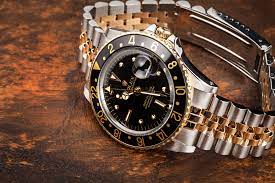Hight Quality Replica Rolex GMT-Master II For Womens For Sale
The "belly tank" race car is the epitome of American technical ingenuity during the second half of the 20th century. It's like Indian motorcycles, postwar hot rods, and Gee Bee planes. Belly tank racers, also known as "Lakesters", made use of surplus military material after WWII, such as fuel tanks. These tanks were teardrop-shaped and fitted to fighter aircrafts. Their aerodynamic profiles, dimensions, and structural integrity made them ideal for building a racer from scratch.
Although they are a slimmer profile, their name does not refer to their midriff girth. They were born in the 1940s and the "belly" is a reference to emergency drop tanks that were fitted to fighter planes' bellies. These tanks were used to increase the range of aircraft and were removed and thrown away when empty.swiss replica watches They are also known as "drop tanks".
The teardrop-shaped fuel tanks, which were made of canteens, uniforms, and other clothing, as well as watches, belts and messenger bags, became surplus army leftovers like other leftovers. My Uncle Bob's Surplus Store and Cousin Huudi's Surplus Store were my favorite places to spend hours. They had a lot of paraphernalia that was unused, new, and not worn - which was a popular choice for hippies back in the 1960s.
The same happened for car enthusiasts on the other side. Hot-rodding legend Bill Burke, of the So-Cal Speed Shop, built the "Lakester" in the late 1940s from an aircraft drop tank. This was to celebrate his ability to race on perfectly flat, dry lakes. Burke was inspired to use a fuel tank to make a car body by seeing one at Guadalcanal, according to legend. He was impressed by the streamlining and measured it.Roger Dubuis Replica Watches Using the dimensions of the Ford engine block and rear end, Burke devised the idea of a sleek body with four exposed wheels. Aerodynamics were already addressed.
Burke's first Lakester was made from a 168-gallon tank from the P-51 Mustang. There were plenty of spare belly tanks from other aircraft that sold for less than $50 each. The design was eventually modified to use the larger 315-gallon P-38 Lightning tank. However, builders preferred to use only two bottom halves as the upper half of the tanks contained openings for fuel and hardware to attach to the aircraft.
The Belly racers still exist today, their speeds have increased from less than 100 mph to those of the top competitors exceeding 360 mph. They have their own class in Southern California Timing Associationcompetition, and their devotees will probably snap up Bell& Ross' gorgeous horological tribute.








